Visit our new accessibility audit services website: wcag2.com… we’ll redirect you there in 30 seconds.

“No Trade-offs” Inclusive Design™: Design teams are often understandably concerned that complying with accessibility regulations is going to result in products that disappoint both designers and users. Design teams fear that their site will lose its drama and intrigue, and their fear is understandable: we’ve seen horrible results when non-designer auditors dictate horrible compromises on an excellent site.
Our approach is refreshingly different: as a firm that specializes in inclusive design, we’ve developed a library of techniques that allow us to promise to you compliance with every Level A and Level AA success criterion in a way that will enhance the UX and SEO for your entire audience. We call this “No Trade-offs” Inclusive Design™: it ensures that the UX for all users need not be compromised by the accommodations for those living with disabilities. Rather, it will improve the design for all. At the same time, we will remain pragmatic with respect to guaranteeing your deadlines.
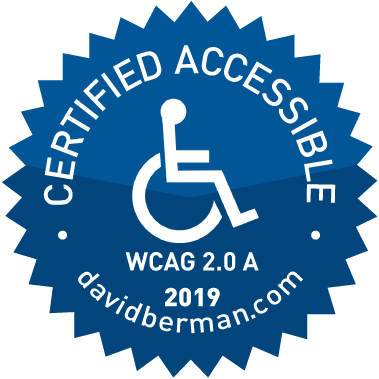
Accessibility standards we target in our 3-phase approach to conformance evaluations:
- WCAG Level A, Level AA, Level AAA. Now covering WCAG 2.0 and 2.1
- Government of Canada’s Standard on Web Accessibility
- AODA
- ADA
- Section 508 (existing and “new”)
- IITAA (existing and anticipated 2.0)
- Oklahoma
- Norway’s Discrimination and Accessibility Act Section 14
- PDF/UA
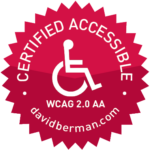
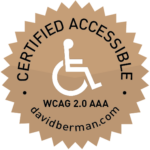

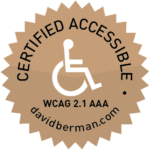
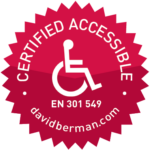
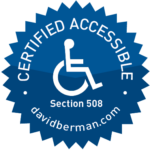
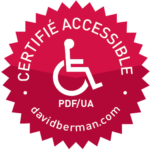
Phase 1 (Audit/Gap analysis and evaluation)
- Orientation to assets, and requirements analysis (including establishing accessibility support baseline and sample page types)
- GoC Standard on Web Accessibility/compliance testing
- AODA IASR 191/11 compliance testing
- ADA/Section 508 compliance testing
- Section 508 2012 draft compliance testing
- IITAA 1.0 compliance testing (including the one IITAA 1.0 rule that exceeds WCAG 2.0 Level AA)
- Pertinent WCAG compliance testing
-
- 25 Level A success criteria
- 13 Level AA success criteria (with exceptions)
- 23 Level AAA success criteria
-
- Methodology (in alignment with WCAG-EM 1.0 conformance evaluation methodology)
-
- content
- code
- visual interface elements
- Human review of each success criterion
- Identify deficiencies
-
- Evaluation findings report listing each relevant success criterion marked as:
- “Passed”
- “Failed”
- includes variance explanations examples, with a repair suggestion for each
- “Not Present”
- Testing and tools:
- Compliance for:
- YUI (Android, Chrome, Firefox, IE, Opera, Safari, Edge)
- Acrobat/plugins
- JAWS
- NVDA
- ZoomText
- additional popular assistive technologies
- Accessibility testing tools we use, as required:
- AChecker
- Acrobat Pro (9, X, XI, DC …on Windows and/or MacOS)
- Adobe LiveCycle Designer / AEM Forms Designer
- CommonLook Office, CommonLook Clarity
- Compliance Sheriff
- Deque (including Worldspace)
- Fangs
- FireEyes
- HP QuickTest Pro
- HTML CodeSniffer
- Microsoft Office (2003, 2007, 2010, 2011, 2013, 2016/365, 2019)
- PAC (1.3, 2.0, 3.0)
- PEAT
- Vischeck
- WAVE
- W3C validation suite
- Zimmerman Low Vision Simulation Kit
- Compliance for:
- Third-Party Assessment of Conformance
- Provides our findings and expert opinion/assurance regarding compliance
- Documentation of the outcomes of each step of our testing activities
- Provides repair suggestions for each failure example discovered
Phase 2 (Remediation: Coaching/Programming)
After the Gap Analysis is complete, remediation is often need to be performed to achieve compliance (either by your programming team optionally coached by us, our team, or a combination of your choice).
We will also recommend adding a compliance statement to your product, that will help celebrate and educate visitors regarding your degree of compliance. For example, the United States government typically likes to see a VPAT statement. If you would like, we will include the content for such a compliance statement in our report. Additionally we will provide a badge graphic for the level of compliance achieve that we have certified, which can optionally link back to a public-facing page on the third party site that presents the report. All of this is at no additional cost to you.
We can also provide a learning guide from our public courses, as well as optional guidance on integrating documentation for you that would promote best practices going forward for development and quality assurance.
Phase 3 (Certification)
When Remediation is complete, we test again, then provide an updated report that includes a Third-Party Assessment of Conformance and a Conformance Claim Opinion Letter, accompanied by a Compliance Certificate as warranted.
Our letter and certificate would reference the audit date and attest to the degree of compliance achieved with regard to the standards being tested. Each document would be suitable for presenting to auditors or visitors.
We will be pleased to optionally present the results as well (for example to senior management).
Remote or On-site Training
Half-day or full-day customized learning events on Web and document accessibility for all your content and Web developers (including a keynote for senior executives and managers, demonstrations of assistive technologies, the return on investment, an overview of the most common accessibility issues, best practices, and a complete review of how to comply with the relevant standards for those who need that level of detail.)
For the learning event, we encourage you to invite executives, task force members, administrators, content contributors, as well as a sampling of content owners, editors, and developers, and other stakeholders.
Such immersion also provides orientation benefits:
- gives a more precise framework get a critical mass of your community equipped with a common vocabulary provide the option of a “kick-off” event (including that a senior executive could open the event with introductory remarks)
- build buy-in for accessibility becoming how you “roll”
- provides us with a deep immersion into the ecosystem of issues, dynamics, vocabulary, and current learning levels of your group allows David to test customization if we’ll be providing the event more than once in your organization.
More Optional Deliverables
Usability Testing By End-Users With Specific Deficits:
This service involves human subjects with specific deficits. We ask our testers to perform one or more designated tasks on your product. Their experiences are recorded as they strive to complete the assigned task(s) in a timely manner. Testing at this level provides extraordinary feedback that can guide accessibility and usability enhancements. This process enables our clients to provide a usable and accessible experience that exceeds published standards, because it is possible to meet all the standards without producing a product that is usable by people with certain deficits.
The report then includes suggestions to address any issues detected. At your option, we will provide a quote to implement these suggestions.
PDF:
We can also provide similar services specifically targeting your PDF files, including PDF/UA (the international ISO standard on accessible PDF).
Broader Analysis:
We can broaden our analysis to include national or regional standards or guidelines that also trace to WCAG (for example, Canada’s Standard of Web Accessibility, Ontario’s AODA, USA’s Section 508 present and new draft versions, Illinois’ IITAA, the EU’s Mandate M376, Australia’s IPS, New Zealand’s NZGWS 2.0, France’s RGAA 2.2.1, Germany’s BITV 2).
Experience
Web accessibility
We are experts in the fulfillment of WCAG, AODA, Section 508, ADA, and PDF/UA requirements regarding accessible documents and Web publishing. We have performed accessibility audit and review for Tim Berners-Lee’s World Wide Web Foundation, on both government and business websites in each of over 40 countries.
Accessibility for Ontarians with Disabilities
We have expert knowledge in all relevant requirements of the accessibility standards called for in the regulations under the Accessibility for Ontarians with Disabilities Act, 2005 (AODA).
We are experts in the fulfillment of AODA regulations regarding accessible documents and Web publishing. Our strength in this area is such that we run regular courses in Ontario that specifically teach executives, managers, educators, content developers, and Web programmers how to comply with AODA regulations. The Accessibility Directorate of Ontario itself (who governs AODA) has repeatedly sent their managers and staff to be trained personally by us.
PDF standards
We have provided training on strategizing, developing and testing accessible PDF, including Adobe employees, and at Adobe Canada headquarters. We run regular public courses that specifically teach managers, content developers, and Web programmers how to comply with federal and provincial accessibility regulations.
David Berman is a member of the ISO committee that has developed the international standard for accessible PDF (PDF/UA).
Ontario municipalities and school boards
Our AODA clients for consulting and training have included a variety of municipalities and public institutions in Ontario (including the Association of Municipalities of Ontario, City of Cambridge, City of Oakville, City of Ottawa, City of Owen Sound, City of Hamilton, City of Peterborough, County of Essex, County of Wellington, Halton District School Board, Hamilton-Wentworth School Board, Limestone District School Board, Niagara Parks Commission, Norfolk County, Region of Peel, Toronto Transit Commission, and the Windsor-Essex County Health Unit.)
Higher education/academia
Our clients for consulting and training have included a variety of colleges and universities within Ontario (including Algonquin College, Brock University, Carleton University, Durham College, Humber College, McMaster University, Mohawk College, Seneca College, St. Lawrence College, University of Guelph, University of Toronto, University of Waterloo, University of Windsor, W. Ross MacDonald School for the Blind, and York University), elsewhere in Canada (Concordia University), the United States (Boston College, Virginia Commonwealth University, University of Virginia, Savannah College of Art and Design), and beyond (Cardiff Metropolitan University, London School of Printing and Publishing, Universidad de las Americas, Yarmouk University, Bauhaus / Anhalt University of Applied Sciences, Binus University, Caldas University, Central Academy of Fine Arts of China, Federal University of Pernambuco, Lebanese American University, Vilnius Academy of Arts, VCU Qatar).
David is Chair of Carleton University’s Carleton Access Network for accessible information technology, run out of Carleton University’s Paul Menton Centre as an initiative of the School of Engineering.
Government Accessibility
We have been involved with United States and Government of Canada Treasury Board standards on accessibility for over a decade, and have provided training to most major departments and agencies in the federal government. We have also provided consultation to the governments of Manitoba, Ontario, Queensland (Australia), India, and Norway. We have completed accessibility audits for Statistics Canada and the federal Office of the Commissioner for Federal Judicial Affairs’ Judges Counselling Program.
Accessibility Audit Services from David Berman Communications (2-page PDF) ![]() [595 kb]
[595 kb]
Reviewed January 16, 2022
Hi, I’m from yotpo.com and a lot of ecommerce use our widget on their websites. We need our widgets to be compliant and so I’m looking for an auditor. Let me know if you can help.
Hi Douglas: we can certainly help! How may we best contact you in order to learn more about how we can best help you make your widgets compliant?
Typo in your first sentence on this page: https://davidberman.com/accessibility/accessibility-audit-services/ “understandable” s/b “understandably”
Thanks Nick! Fixed.
Dear David Berman,
Just looking at your site regarding Accessibility Audit Services on this page and noticed an error:
https://davidberman.com/accessibility/accessibility-audit-services/
The text reads in part:
“Design teams fear that their site will lose tits drama and intrigue…”
I am sure it is meant to say “…lose its drama…”
Neil
Thanks Neil. Fixed!